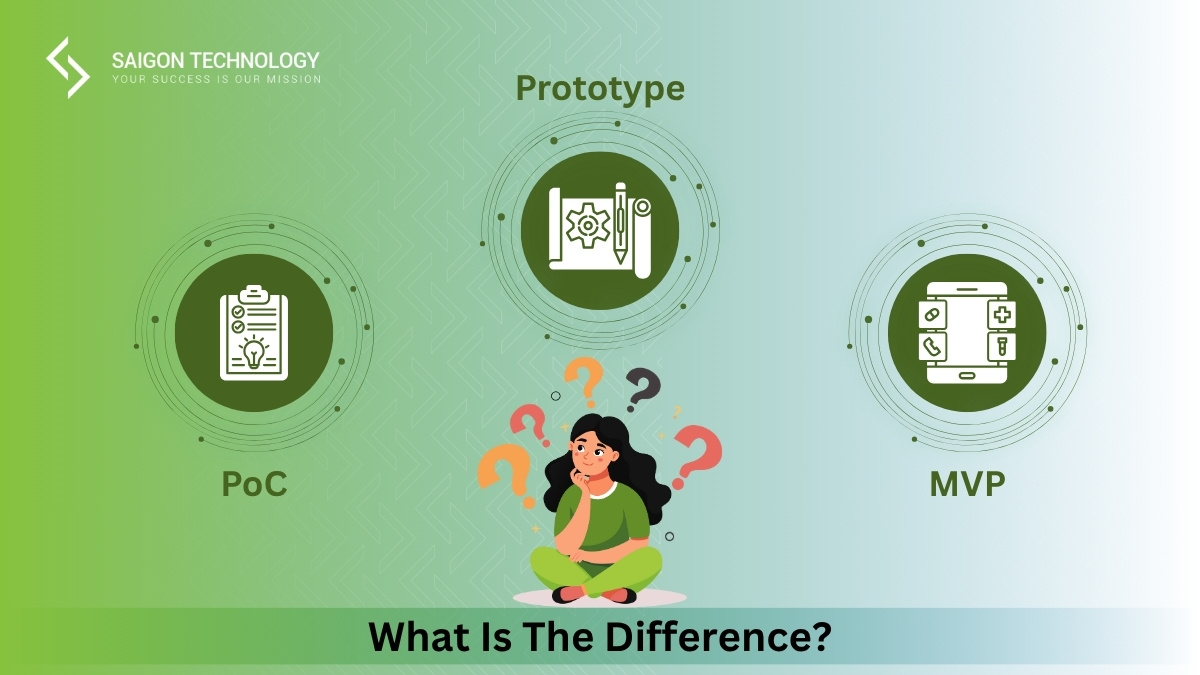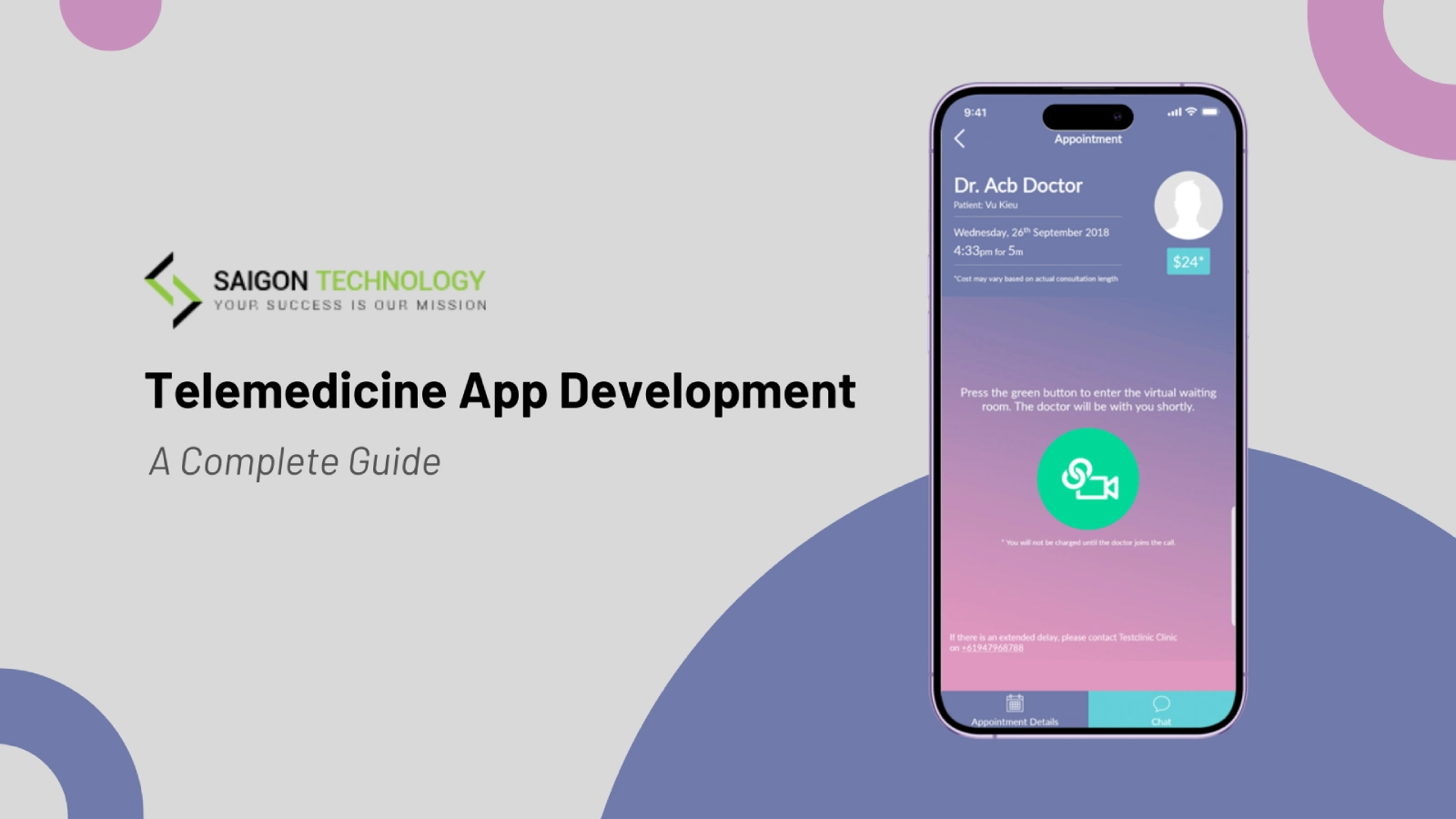Introduction to Software Development Teams
A software development team is the foundation of any successful digital product. Whether you’re developing a mobile app, enterprise software, or a web platform, assembling the right team with diverse expertise is crucial. A well-structured team ensures efficient workflows, high-quality software, and on-time delivery.
Why Is an Effective Software Development Team Important?
-
Efficient Project Execution: A skilled team ensures projects are completed within deadlines.
-
High-Quality Output: Good team collaboration reduces errors and enhances software quality.
-
Adaptability to Changes: Agile teams can quickly respond to changing requirements.
-
Faster Problem Solving: With the right mix of experts, challenges can be addressed efficiently.
What Makes a Software Development Team Effective?
✔ Clearly Defined Roles – Each team member should understand their responsibilities.
✔ Strong Communication – Regular meetings and collaboration platforms enhance teamwork.
✔ Agile Methodologies – Following an iterative approach ensures flexibility and rapid delivery.
✔ Good Cultural Fit – A positive team environment improves morale and productivity.
✔ Right Development Tools – Using the best project management and version control tools boosts efficiency.
This guide will cover everything from team structures and methodologies to hiring processes, management strategies, and software development models. Let’s begin by exploring Agile vs. Traditional Methodologies.
Agile vs. Traditional Methodologies
When building an effective software development team, choosing the right software development methodology is crucial. The two most common approaches are Agile and Traditional (Waterfall Methodology). Each methodology affects how the team operates, collaborates, and adapts to project changes.
Understanding the Agile Manifesto
The Agile Manifesto, introduced in 2001, defines four key values that differentiate Agile from traditional methodologies:
-
Individuals and interactions over processes and tools.
-
Working software over comprehensive documentation.
-
Customer collaboration over contract negotiation.
-
Responding to change over following a fixed plan.
Agile promotes an iterative development lifecycle, where projects are broken into sprints, allowing teams to deliver functional software in short intervals.
Key Differences: Waterfall Methodology vs. Agile
|
Aspect |
Agile Development |
Waterfall Methodology |
|
Development Process |
Iterative development lifecycle, delivering features incrementally. |
Linear, phase-based approach where each phase must be completed before the next begins. |
|
Flexibility |
Adapts to changes and allows modifications at any stage. |
Fixed scope; changes require restarting the development process. |
|
Team Structure |
Encourages flat hierarchy and self-managed structure. |
Follows a strict role delineation with top-down control. |
|
Release Planning |
Software is released frequently after sprints. |
Software is released only at the end of development. |
|
Feedback Mechanism |
Continuous feedback from stakeholders and customers. |
Feedback is gathered only after the project is completed. |
Importance of Continuous Feedback and Sprints
Agile teams follow a sprint-based approach, where development cycles typically last 1-4 weeks. Each sprint focuses on completing a small set of features, allowing for:
✔ Frequent adjustments based on continuous feedback from stakeholders.
✔ Faster detection and resolution of issues.
✔ Better alignment with business goals.
At the end of each sprint, teams conduct a retrospective to analyze what worked well and identify areas for improvement.
The Role of DevOps Approaches in Team Structure
-
DevOps approaches integrate development and operations, allowing for seamless deployment.
-
Automated continuous integration and deployment (CI/CD) helps release software efficiently.
-
DevOps enhances collaboration by breaking down silos between developers, testers, and IT teams.
How Flat Hierarchy and Self-Managed Structure Improve Efficiency
Agile teams often adopt a flat hierarchy, reducing bureaucratic overhead and improving team efficiency.
✔ A self-managed structure allows developers to take ownership of their work.
✔ Teams operate autonomously, making decisions without excessive managerial oversight.
✔ Encourages innovation and collaborative practices, leading to better software quality.
By choosing Agile over traditional methodologies, teams can work more efficiently, adapt faster to change, and deliver software in smaller, manageable releases. Next, let’s explore how to build a software development team from scratch.
Building a Software Development Team
Creating a software development team requires careful planning to ensure that the right people, tools, and strategies are in place. A well-structured team can accelerate development, improve collaboration, and ensure high-quality software delivery.
Understanding Requirements and Specifications
Before assembling a team, it’s essential to define the requirements and specifications of the project. These include:
✔ Technology Stack – Choosing programming languages, frameworks, and databases.
✔ Software Development Models – Selecting Agile, Waterfall, or Hybrid methodologies.
✔ Project Scope – Defining functional and non-functional requirements.
✔ Deadline and Budget – Determining the timeline and financial constraints.
Clearly documenting these details ensures that the hiring process is aligned with the project’s needs.
The Hiring Process for an Effective Team
The hiring process involves identifying skilled professionals who align with the project’s goals. Steps include:
1. Identifying Required Roles
Every software team consists of multiple specialized roles, including:
-
Developers – Front-end, back-end, full-stack.
-
Project Manager – Oversees planning and execution.
-
Quality Assurance Engineer – Ensures software reliability.
-
UI/UX Designer – Creates user-friendly interfaces.
-
DevOps Engineer – Manages deployment and CI/CD pipelines.
2. Conducting Technical Interviews
Candidates should be evaluated based on:
✔ Problem-solving skills.
✔ Knowledge of software development methodologies.
✔ Familiarity with version control systems like Git.
3. Screening for Cultural Fit
A developer’s ability to work well within a team is just as important as their technical skills. Look for:
✔ Strong collaborative practices.
✔ Ability to adapt to cross-functional team collaborations.
✔ Interest in learning and improving skills.
In-House Development Team vs. Outsourced Development
Choosing between an in-house development team and outsourced development depends on the project’s scale, budget, and requirements.
|
Factor |
In-House Development Team |
Outsourced Development |
|
Control & Oversight |
Full control over the project. |
Less control; relies on external vendors. |
|
Collaboration |
Easier real-time communication. |
May face time-zone challenges. |
|
Cost |
Higher salaries and infrastructure costs. |
More cost-effective for startups. |
|
Scalability |
Limited by company hiring speed. |
Can quickly scale up or down based on demand. |
Importance of Onboarding and Staff Augmentation Services
Onboarding
A well-structured onboarding process ensures that new hires integrate quickly into the team. It includes:
✔ Introduction to software development methodologies used in the company.
✔ Familiarization with project management tools like Jira, Trello, or Asana.
✔ Assigning a mentor for guidance.
Staff Augmentation Services
If additional expertise is required, companies may use staff augmentation services to temporarily expand the team. This approach:
✔ Provides access to highly skilled professionals on demand.
✔ Reduces long-term employment costs.
✔ Helps meet project milestones without delays.
Implementing a Strategic Framework for Team Success
A strategic framework ensures that all aspects of the team are well-structured. Key elements include:
✔ Clearly Defined Team Roles – Everyone knows their responsibilities.
✔ Proper Communication Channels – Regular stand-up meetings and sprint planning.
✔ Efficient Task Allocation – Using Agile boards to track progress.
By following these steps, organizations can build a high-performing software development team tailored to their project’s needs. Next, let’s discuss how to choose the right team composition for project success.
Choosing the Right Team for Project Success
Selecting the right software development team structure is essential for a project’s success. The right mix of technical expertise, collaboration, and leadership ensures smooth execution and high-quality results. This section explores key factors in team selection, including team roles, project requirements, and management strategies.
The Role of Software Development Methodologies in Team Selection
The chosen software development methodology influences the team’s workflow, communication, and responsibilities.
✔ Agile teams require a Scrum Master and focus on collaborative practices with flexible roles.
✔ Waterfall teams have well-defined role delineations with a rigid structure.
✔ Hybrid teams blend Agile and Waterfall, adapting to specific project needs.
Each methodology affects how the team is structured, how they communicate, and how they approach problem-solving.
Understanding Software Development Models
Different software development models suit different projects. The most commonly used are:
1. Scrum Practices
-
Focuses on sprints, where work is divided into short cycles.
-
Uses a product backlog to track tasks and priorities.
-
Requires a Scrum Master to facilitate Agile processes.
2. Kanban Model
-
Uses visual boards to track work progress in real time.
-
Best for projects requiring continuous integration and deployment (CI/CD).
3. Waterfall Model
-
Follows a step-by-step development process with clear project milestones.
-
Best for projects with well-defined requirements and specifications.
Understanding these models helps in selecting a team structure that aligns with the project’s goals.
Balancing Team Roles and Expectations
A well-structured software development team includes multiple roles working together. The most common team roles and expectations include:
✔ Project Manager – Ensures tasks are completed on time.
✔ Product Owner – Manages the product backlog and defines project priorities.
✔ Team Lead – Provides technical guidance and mentorship.
✔ Developers – Implement the core functionalities of the project.
✔ Quality Assurance Engineers – Conduct software testing to ensure reliability.
Balancing these roles ensures that each team member contributes effectively to the development lifecycle.
How Cultural Fit and Collaborative Practices Enhance Productivity
Cultural fit is as important as technical skills when selecting a team. Teams with a strong cultural alignment:
✔ Work more efficiently together.
✔ Communicate effectively.
✔ Have higher job satisfaction and lower turnover rates.
Best Collaborative Practices for High-Performing Teams:
✔ Conduct regular stand-up meetings for continuous feedback.
✔ Promote knowledge-sharing through mentorship programs.
✔ Use communication channels like Slack, Microsoft Teams, or Discord.
Importance of Scrum Practices and the Product Backlog
Scrum Practices in Team Management
-
Scrum teams work in sprints, delivering small, functional increments.
-
Teams review progress in retrospectives, identifying areas for improvement.
-
Regular release planning ensures smooth product rollouts.
The Role of the Product Backlog
-
A product backlog is a prioritized list of project tasks.
-
The Scrum Master and Product Owner ensure backlog items are refined and assigned efficiently.
By selecting the right team composition, development methodology, and collaboration strategies, organizations can build a highly effective software development team that meets business goals.
Next, let’s explore best practices for managing software development teams.
Managing Software Development Teams
Managing a software development team requires strong leadership, effective communication, and the right tools. A well-managed team ensures smooth collaboration, timely delivery, and high-quality software.
This section will explore task allocation, communication strategies, collaboration tools, and leadership techniques to enhance productivity and efficiency in development teams.
The Role of the Scrum Master in Team Management
A Scrum Master is essential in Agile teams, facilitating the development process while ensuring that Agile principles are followed. The Scrum Master is responsible for:
✔ Coaching the team on Scrum practices such as sprints, retrospectives, and release planning.
✔ Removing roadblocks that slow down the team.
✔ Ensuring that team members receive continuous feedback to improve performance.
✔ Encouraging self-organization and promoting team autonomy.
A well-functioning Scrum Master helps maintain task allocation, communication, and sprint efficiency.
Best Practices for Task Allocation and Team Autonomy
Assigning tasks effectively is key to keeping a project on schedule. Some of the best task allocation strategies include:
✔ Using story points to estimate the effort required for each task.
✔ Assigning tasks based on each team member’s strengths and expertise.
✔ Encouraging team autonomy, allowing members to take ownership of their work.
✔ Avoiding micromanagement and fostering self-managed structures.
By balancing task allocation with team autonomy, teams can work efficiently and independently while staying aligned with project goals.
Effective Use of Collaboration Platforms and Communication Channels
Using the right collaboration platforms and communication channels can improve efficiency and ensure smooth project execution. Some widely used tools include:
✔ Slack, Microsoft Teams, or Discord – For real-time messaging and discussions.
✔ Jira, Trello, Asana – For tracking tasks and sprint progress.
✔ Google Drive, Confluence, Notion – For sharing project documentation and knowledge.
Communication Best Practices:
✔ Regular stand-up meetings to sync team progress.
✔ Clear documentation of requirements and specifications to avoid misunderstandings.
✔ Transparency in reporting blockers and delays.
Importance of Continuous Integration and Deployment (CI/CD)
Continuous Integration and Deployment (CI/CD) is a key DevOps practice that helps software teams:
✔ Automate testing and deployment.
✔ Reduce integration issues between development and production.
✔ Ensure faster release cycles with minimal downtime.
Using CI/CD pipelines ensures that software updates are delivered quickly, reliably, and efficiently.
Utilizing Project Management Tools for Maximum Efficiency
Project management tools streamline workflow and improve stakeholder management. Common tools include:
✔ Jira – For managing Agile sprints and tasks.
✔ Trello – For simple drag-and-drop task tracking.
✔ GitHub/GitLab – For version control systems and team collaboration.
These tools help teams organize workloads, meet project milestones, and track progress effectively.
By implementing effective task allocation, collaboration tools, CI/CD pipelines, and Agile leadership, software teams can improve efficiency and produce high-quality software.
Next, let’s discuss the key roles within a software development team and how they contribute to project success.
Software Development Team Roles
A successful software development team consists of various specialized roles, each contributing to different aspects of the project. Understanding these roles ensures effective collaboration, smooth execution, and high-quality software delivery.
This section covers essential team roles, their responsibilities, and how they interact within different software development methodologies.
Key Software Development Team Roles
1. Product Owner
✔ Acts as the bridge between stakeholders and the development team.
✔ Defines project goals and ensures the product backlog is up to date.
✔ Prioritizes tasks based on business needs and user feedback.
✔ Works closely with the Scrum Master and developers to refine features.
Why It’s Important:
A strong Product Owner ensures that the development team focuses on the most valuable tasks, aligning software with business objectives.
2. Project Manager
✔ Oversees planning, execution, and tracking of project progress.
✔ Ensures the team follows the chosen software development methodology (Agile, Waterfall, etc.).
✔ Manages stakeholder management, deadlines, and budgets.
✔ Coordinates with other team members to remove blockers.
Why It’s Important:
A Project Manager ensures that software is developed within the required timeframe, budget, and scope while maintaining quality standards.
3. Scrum Master
✔ Facilitates Scrum practices like sprints, retrospectives, and release planning.
✔ Removes roadblocks that hinder the team’s progress.
✔ Ensures Agile principles such as continuous feedback are followed.
✔ Encourages self-organization and team autonomy.
Why It’s Important:
The Scrum Master is essential for teams using Agile methodologies, ensuring smooth collaboration and efficient development cycles.
4. Software Architect
✔ Designs the technical architecture and defines software development models.
✔ Makes high-level decisions on technology stacks, frameworks, and scalability.
✔ Ensures the software structure supports future growth.
✔ Works closely with developers and DevOps engineers.
Why It’s Important:
A Software Architect provides the technical foundation for a project, ensuring performance, scalability, and maintainability.
5. Front-End Developer
✔ Develops the user interface and ensures a smooth user experience.
✔ Implements designs created by UX/UI Designers.
✔ Works closely with back-end developers to connect front-end components to databases.
Why It’s Important:
A Front-End Developer ensures the software is visually appealing, responsive, and user-friendly.
6. Back-End Developer
✔ Builds the server-side logic, database interactions, and APIs.
✔ Implements secure authentication and authorization mechanisms.
✔ Ensures smooth communication between the front-end and database.
✔ Works on continuous integration and deployment (CI/CD) pipelines.
Why It’s Important:
A Back-End Developer ensures that data is processed efficiently and that the application runs securely and reliably.
7. UX/UI Designer
✔ Designs the user experience (UX) and visual elements (UI).
✔ Creates wireframes, mockups, and prototypes.
✔ Ensures accessibility and usability of software applications.
Why It’s Important:
A UX/UI Designer helps improve user engagement and satisfaction, making the software intuitive and easy to use.
8. Quality Assurance (QA) Engineer
✔ Conducts software testing to detect bugs and performance issues.
✔ Ensures that software meets the requirements and specifications.
✔ Works with developers to implement fixes and improve reliability.
Why It’s Important:
A QA Engineer ensures the delivery of a high-quality, bug-free product through rigorous validation testing.
9. DevOps Engineer
✔ Manages infrastructure, deployment pipelines, and cloud environments.
✔ Implements DevOps approaches for efficient software delivery.
✔ Uses version control systems to streamline code management.
Why It’s Important:
A DevOps Engineer helps teams achieve faster releases, automation, and system stability.
10. Test Automation Engineer
✔ Develops automated test scripts to improve software testing efficiency.
✔ Ensures robust testing for performance, functionality, and security.
✔ Works alongside the QA Engineer to maintain high software quality.
Why It’s Important:
A Test Automation Engineer speeds up the software testing lifecycle, reducing manual testing efforts and improving reliability.
11. Team Lead
✔ Provides technical mentorship to developers.
✔ Ensures the team follows best coding practices.
✔ Acts as a bridge between developers and management.
Why It’s Important:
A Team Lead enhances cross-functional team collaborations and ensures high development standards.
How These Roles Fit into Agile Teams
In an Agile development team, roles are more flexible, and collaboration is key. Agile teams typically have:
✔ A Scrum Master to facilitate Agile workflows.
✔ A Product Owner to prioritize the product backlog.
✔ Cross-functional developers who handle both front-end and back-end tasks.
✔ QA Engineers who continuously test and validate software.
How These Roles Fit into Waterfall Teams
✔ Teams have well-defined role delineations with less flexibility.
✔ Each role follows a sequential software development model.
✔ Development and testing are done in separate phases, not iteratively.
A well-balanced software development team ensures that every aspect of software creation—from planning to deployment—is handled efficiently.
Next, let’s explore different team structure approaches and how to choose the right one.
Team Structure Approaches
Choosing the right software development team structure is crucial for optimizing productivity, collaboration, and project success. The structure determines how responsibilities are distributed, how teams interact, and how efficiently they deliver software.
In this section, we will explore different team structures, their advantages, and how to choose the best approach based on project needs.
Types of Software Development Team Structures
1. Generalist Team Structure
A generalist team consists of developers with broad skill sets who can work on different parts of the project. These teams focus on adaptability and flexibility.
✔ Advantages:
-
Team members can contribute to various aspects of development.
-
Easier collaboration due to overlapping skill sets.
-
Best suited for small projects or startups.
✔ Challenges:
-
May lack deep technical expertise in specific areas.
-
Can struggle with complex or highly specialized projects.
2. Specialist Team Structure
A specialist team consists of experts in specific technologies, such as front-end developers, back-end developers, UX/UI designers, software architects, and QA engineers.
✔ Advantages:
-
High level of expertise in each domain.
-
Best for complex, large-scale projects that require deep technical knowledge.
-
Efficient handling of technical intricacies and system architecture.
✔ Challenges:
-
Requires strong coordination between different specialists.
-
Can slow down development if dependencies are not well managed.
3. Hybrid Team Structure
A hybrid team blends generalists and specialists, ensuring a balance between adaptability and deep expertise.
✔ Advantages:
-
Combines the flexibility of generalists with the expertise of specialists.
-
Well-suited for cross-functional team collaborations.
-
Allows for efficient task distribution based on team strengths.
✔ Challenges:
-
Requires careful task allocation to maximize efficiency.
-
Managing communication between generalists and specialists can be complex.
4. Cross-Functional Team Collaborations
A cross-functional team includes professionals from different areas working together throughout the iterative development lifecycle. It ensures that all perspectives—development, testing, design, and business—are integrated from the beginning.
✔ Advantages:
-
Promotes innovation and collaborative practices.
-
Encourages agile leadership style and decision-making.
-
Reduces bottlenecks by improving communication across disciplines.
✔ Challenges:
-
Requires strong mentorship and leadership to align team members.
-
May slow down if conflicts between different roles arise.
How to Choose the Right Team Structure
When selecting a software development team structure, consider:
✔ Project’s Breadth – Small projects may benefit from generalists, while large projects require specialists.
✔ Technical Intricacies – Complex projects demand software architects and specialists.
✔ Software Development Methodology – Agile teams often prefer cross-functional or hybrid structures.
✔ Budget & Timeline – Faster development may require a hybrid or specialist approach.
The Role of Agile Leadership Style in Team Structure
An agile leadership style ensures flexibility and responsiveness in software development. It encourages:
✔ Multidisciplinary Expertise – Team members gain knowledge in multiple domains.
✔ Iterative Development – Faster releases through sprints.
✔ Collaboration Over Hierarchy – Empowering teams rather than imposing rigid control.
Choosing the right team structure is key to maximizing efficiency, ensuring smooth collaboration, and delivering high-quality software.
Next, let’s wrap up with a summary and key takeaways.
Conclusion & Key Takeaways
Building an effective software development team requires a strategic approach, from selecting the right team structure to implementing the best software development methodologies. A well-balanced team ensures efficient project execution, high-quality software, and long-term success.
Key Takeaways
1. Selecting the Right Methodology
✔ Agile development promotes flexibility with sprints, continuous feedback, and self-managed structures.
✔ Waterfall methodology follows a structured approach with well-defined project milestones and role delineations.
✔ Hybrid approaches balance structure with adaptability, making them suitable for dynamic projects.
2. Defining Clear Roles & Responsibilities
✔ A successful software development team includes key roles such as:
-
Product Owner (manages the product backlog and aligns goals).
-
Project Manager (ensures deadlines and budgets are met).
-
Developers (handle front-end, back-end, and full-stack development).
-
Scrum Master (facilitates scrum practices and team efficiency).
-
DevOps Engineer (manages CI/CD pipelines and deployment).
-
Quality Assurance Engineers & Test Automation Engineers (conduct software testing).
✔ Clearly defined team roles and expectations prevent confusion and improve accountability.
3. Choosing the Right Team Structure
✔ Generalists – Best for startups and small teams requiring adaptability.
✔ Specialists – Ideal for large-scale projects with complex technical intricacies.
✔ Hybrid Teams – Combine multidisciplinary expertise for balanced execution.
✔ Cross-functional teams – Encourage collaborative practices and innovation.
4. Effective Team Management & Collaboration
✔ Task Allocation & Team Autonomy – Assigning story points and allowing team members to take ownership of tasks improves efficiency.
✔ Communication Channels – Tools like Slack, Microsoft Teams, and Jira improve collaboration.
✔ CI/CD & DevOps Approaches – Automating continuous integration and deployment speeds up software releases.
5. Long-Term Success Factors
✔ Cultural Fit – Ensuring the right mindset improves teamwork and retention.
✔ Mentorship & Onboarding – Supporting new hires with mentorship programs and structured onboarding.
✔ Strategic Framework – Using agile leadership styles to empower teams.
Final Thoughts
A strong software development team isn’t just about technical skills—it’s about collaboration, adaptability, and efficiency. By implementing the right software development methodologies, team structures, and project management strategies, organizations can achieve faster, higher-quality software delivery while maintaining a productive and motivated workforce.











